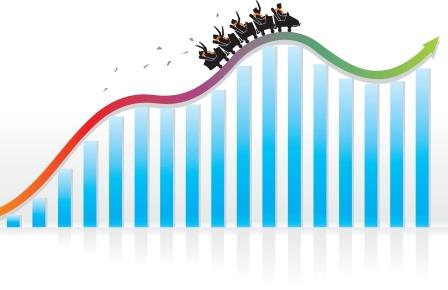2020, one of the worst years for humanity during the last hundred years, turned out to be, paradoxically, one of the best years for stock markets, globally. The year saw one of the sharpest crashes followed by an incredible ‘V’ shaped recovery. The mother market US led the global rally with the Dow, Nasdaq, S&P 500 and Russell 2000 setting record highs. Back home in India, Nifty bounced back by around 80 percent from the March lows giving fabulous returns to investors. Those investors who remained invested, particularly those who invested after the market crash, are sitting on huge profits. A relevant question is: Is it time to book some profits?
Two facts are significant. One, this is a global rally; two, this rally is primarily driven by the unprecedented liquidity unleashed into the global financial system by the leading central banks of the world, particularly the Fed. Also, the historically low interest rates are pushing up stock prices reinforcing the famous Warren Buffet dictum that “interest rates act like gravity on stock prices.” The Fed’s monetary stance that interest rates will be kept close to zero through 2023 has huge implications for asset prices and capital flows. In the absence of consumer price inflation, the humongous liquidity is chasing stocks leading to asset price inflation.
The performance of the developed market index MSCI World Index in November was the best in 45 years. The rally in European markets in November was the best single month rally in history. Emerging markets continue to be flooded with FPI money. India received a mind blogging Rs 60350 crores in November. The trend has been continuing in December too. We have not witnessed this kind of frenzied buying by FIIs since the opening up of Indian markets to Foreign Portfolio Investment. When money floods in like this stock prices can move into unjustifiable levels, even into bubble territory. Unfortunately, bubbles will be known only in hindsight.
Since markets have run up too much too fast, some profit booking is advisable. From the perspective of popular valuation parameters like PE ratio and Market cap to GDP ratio, market is over valued. Nifty is now trading at around 26 times one year forward earnings against the long-term average of 16. Market cap to GDP ratio is above 0.9 against the long-term average of 0.75. High valuations can be justified when interest rates are abysmally low and earnings prospects look highly attractive. In the developed world interest rates are likely to remain low through 2023. But in India we don’t have the luxury of keeping rates low when inflation is above the RBI’s target rate. Regarding earnings growth, there is room for optimism. Nominal GDP growth in FY 22 is likely to be around 14 percent leading to corporate earnings growth of around 20 percent. Can we sustain the momentum beyond FY 22? Economists are divided on this.
At high valuations markets are vulnerable to corrections. Since valuations are high and investors are sitting on big profits, partial profit booking may be considered. However, it is important to remain invested in quality large-caps particularly in performing sectors like financials, IT, pharma and segments of FMCG and autos. Continue with SIPs.









Very precise information and to the point.
Well narrated. Thanks – C.Sivakumar VNC 001
Thanks from Indubhai Patel